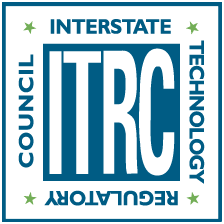Case studies presented are designed to showcase a myriad of MAR elements and implementation as discussed in this document. The authors of each case study present the most unique aspects of their study, which may include operational or technical obstacles overcome, situational constraints, stakeholder issues, regulatory environment, or water quality issues and solutions identified. The uniqueness of each case study allows the opportunity for the reader to learn an aspect of each project that is not necessarily widely known and has not been previously discussed in the vast MAR literature. Table 5-1 provides a list of the case studies.
Table 5-1. Case studies and their approaches
| Case Study | Name | Location | Approach |
| 5.1 | HRSD Sustainable Water Initiative for Tomorrow (SWIFT) Program | Southeast Virginia | Intended Use: |
| -Water supply resilience | |||
| -Improving groundwater quality | |||
| -Mitigation against saltwater intrusion | |||
| -Subsidence reduction | |||
| -Reduction of nutrient discharges to surface waters | |||
| Source water: | |||
| -Municipal wastewater | |||
| Water quality: | |||
| -Pretreatment required | |||
| Recharge technology(s): | |||
| -Recharge well | |||
| 5.2 | Using a Simple, Low-Cost, Injection Water Pretreatment System to Reduce the Concentration of Naturally Occurring Arsenic and Other Trace Metals in Recovered Water during ASR Operations | Deland, Florida | Intended use: |
| -Water supply resilience | |||
| -Improving groundwater quality | |||
| Source water: | |||
| -Not applicable | |||
| Water quality: | |||
| -Pretreatment required | |||
| Recharge technology(s): | |||
| -ASR well | |||
| 5.3 | Seawater Intrusion/Replenishment in Southern Los Angeles County | Southern Los Angeles County, California | Intended use: |
| -Water supply resilience | |||
| -Improving groundwater quality | |||
| -Mitigation against saltwater intrusion | |||
| Source water: | |||
| -Municipal wastewater | |||
| -Imported water | |||
| Water quality: | |||
| -Pretreatment required (tertiary treated recycled water) | |||
| Recharge technology(s): | |||
| -Injection wells | |||
| 5.4 | San Antonio Water System H2Oaks Center ASR Project | Elmendorf, Texas (south of San Antonio, Texas) | Intended use: |
| -Water supply resilience | |||
| -Resilience/climate adaptation | |||
| Source water: | |||
| -Alternative aquifer | |||
| Water Quality: | |||
| -Pretreatment required | |||
| -Post-treatment required | |||
| Recharge technology(s): | |||
| -Injection well | |||
| 5.5 | Salinas Valley Groundwater Basin | Monterey County, California | Intended use: |
| -Water supply resilience | |||
| -Use of floodwater (control of flood, agricultural) | |||
| -Protection of riparian ecosystems/maintenance of minimum streamflow | |||
| Source water: | |||
| -Rivers/streams/lakes/reservoirs | |||
| -Captured water | |||
| Water quality: | |||
| -No treatment required | |||
| Recharge technology(s): | |||
| -Enhanced streambed recharge | |||
| 5.6 | Idaho’s Eastern Snake Plain Aquifer MAR Program | Eastern Snake Plain, Idaho | Intended use |
| -Water supply resilience | |||
| -Use of floodwater (control of flood, agricultural) | |||
| -Protection of riparian ecosystems/maintenance of minimum streamflow | |||
| -Resilience/climate adaptation | |||
| Source water | |||
| -Rivers/streams/lakes/reservoirs | |||
| Water quality: | |||
| -No pretreatment required | |||
| -No posttreatment required | |||
| Recharge technology(s) | |||
| -Infiltration pond | |||
| -Wet well | |||
| -Bank filtration | |||
| -Sinkhole | |||
| 5.7 | South Hillsborough Aquifer Recharge Project (Apollo Beach) | Hillsborough County, Florida | Intended use: |
| -Water supply resilience | |||
| -Improving groundwater quality | |||
| -Mitigation against saltwater intrusion | |||
| Source water: | |||
| -Recycled water (high-level disinfection public access-quality) | |||
| Water quality: | |||
| -Pretreatment required | |||
| Recharge technology(s): | |||
| -Injection wells | |||
| 5.8 | Mustang Creek Watershed Dry Well Pilot Study | Merced County, California | Intended use: |
| -Water supply resilience | |||
| Source water: | |||
| -Captured water | |||
| Water quality: | |||
| -Pretreatment required | |||
| Recharge technology(s): | |||
| -Dry well | |||
| 5.9 | Walla Walla Basin Watershed | Oregon | Intended use: |
| -Water supply resilience | |||
| -Protection of riparian ecosystems/maintenance of minimum streamflow | |||
| -Resilience/climate adaptation | |||
| Source water: | |||
| -Rivers/streams/lakes/reservoirs | |||
| Water quality: | |||
| -No treatment required | |||
| Recharge technology: | |||
| -Infiltration basin | |||
| -Infiltration gallery | |||
| 5.10 | Clark Fork River Basin MAR Modeling | Deer Lodge, Montana | Intended use: |
| -Water supply resilience | |||
| -Protection of riparian ecosystems/maintenance of minimum streamflow | |||
| -Resilience/climate adaptation | |||
| -Agricultural | |||
| -Water rights permitting support | |||
| Source water: | |||
| -Rivers/streams/lakes/reservoirs | |||
| -Agricultural return flows | |||
| Water quality: | |||
| -No treatment required | |||
| Recharge technology(s): | |||
| -Dry well | |||
| 5.11 | Army Post Road ASR Well | Des Moines, Iowa | Intended use: |
| -Water supply resilience | |||
| Source water: | |||
| -Rivers/streams/lakes/reservoirs | |||
| Water quality: | |||
| -Pretreatment required | |||
| -Post-treatment required | |||
| Recharge technology(s): | |||
| -ASR well | |||
| 5.12 | South Metro Water Supply Authority Regional ASR Groundwater Model Scope of Work (August 17, 2022) | Aurora, Colorado | Intended use: |
| -Water supply resilience | |||
| Source water: | |||
| -Rivers/streams/lakes/reservoirs | |||
| Water quality: | |||
| -Pretreatment required | |||
| Recharge technology(s): | |||
| -ASR well |


